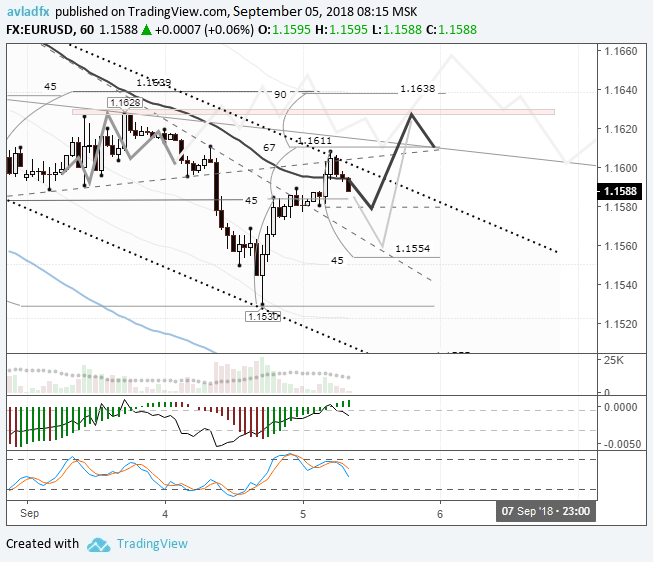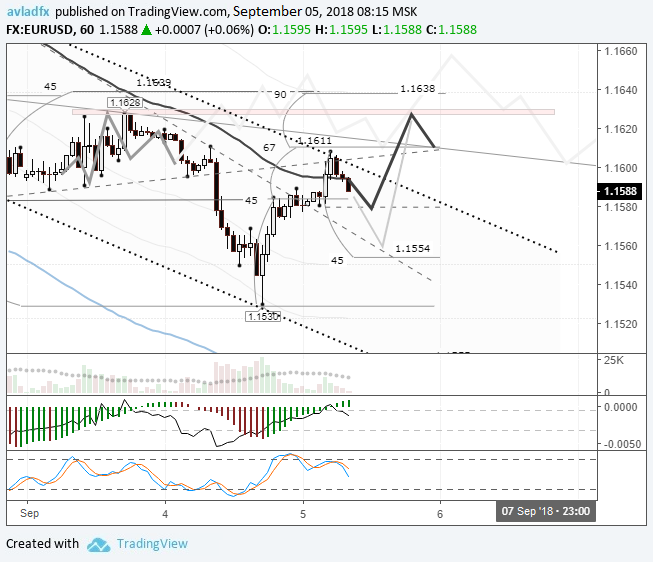Previous:
On Tuesday the 4th of September, trading on the EURUSD pair closed slightly down, although the rate dropped as far as 1.1530 during the US session. The pair hit a new low after a strong ISM manufacturing PMI report for the US. The index came out at its highest since 2004. The value for August was 61.3 against a forecast of 57.6 and a previous reading of 58.1.
I reckon that the euro’s decline gathered pace following the breakout of the support at 1.1594 (trend line of the upwards correctional movement) and the triggering of protective stop levels below this level and the 1.1585 low. By market close, the euro had recovered to 1.1586. Including this morning’s growth, buyers have now recovered all the losses incurred yesterday.
Day’s news (GMT+3):

Fig 1. EURUSD hourly chart.
Current situation:
I wasn’t prepared for the euro’s decline yesterday, so I kept an eye on price fluctuations from the sidelines. In Asia, the rate has jumped to 1.1608 on the back of a strong Aussie dollar following positive GDP data.
At the time of writing, the euro is trading at 1.1594 against USD. At the current price level, the situation is ambiguous given that the daily candlestick has a long tail. This is a harbinger of bullish sentiment.
The pair has rebounded from the trend line. In theory, this is a good place to sell, but Tuesday’s candlestick suggests that the pair is set to rise at least as far as 1.1628. Given the situation, I can envision two different trade scenarios:













Leave A Comment